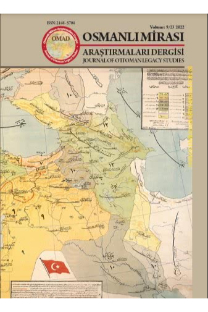Balkanlar'da Etnolojik Çalışmalar
Bosna-Hersek'te (BIH) gezinirken ülkenin her köşesinde etnik ayrımcılık ve üç kurucu etnik grup arasındaki gerilim hissedebilmektedir. Geçtiğimiz yüzyılın 90'lı yıllarındaki savaşlardan kaynaklanan bu gergin atmosfer, 14 Aralık 1995'te imzalanan Dayton Barış Anlaşması'ndan sonra savaşlar durmuş olsa da hâlen farklı şekillerde devam etmektedir. Bu sorunların sürmesinin nedenlerini analiz etmek amacıyla eski Yugoslavya ülkelerinden ve diğer ülkelerden sosyal bilimciler, mevcut durumu daha iyi anlamak için etnolojiyi özel bir alan olarak varsayan etnolojik yöntemleri kullanarak bölgede araştırmalar yürütmektedirler. Bu kısa yazıda, etnolojik araştırmanın Balkanlar'daki kullanımı ve işlevini anlamak amacıyla yakın zamanda basılan iki kitap incelenecektir.
Anahtar Kelimeler:
Etnolojik araştırmalar, Balkanlar, Bosna-Hersek
ETHNOLOGICAL RESEARCH IN THE BALKANS
Scrolling through the Bosnia and Herzegovina (BiH) makes one feel ethnic segregation and tension between the three constituent ethnies at every corner of the country. This tensed atmosphere stemmed from the wars in the 90s of the previous century and, even though the wars stopped after the Dayton Peace Agreement signed in 14 December 1995, is still continuing in different forms. In order to analyze the reasons for the continuity of these problems, social scientists from the ex-Yugoslavian countries and from other countries are conducting research in the region using ethnological methods, which have been assuming to be ethnology as a special field for better understanding existing conflicts. In this short piece, two books published recently will be reviewed to understand the use and function of ethnological research for the Balkans.
Keywords:
Ethnological Research, Balkans, Bosnia and Herzegovina,
- ISSN: 2148-5704
- Yayın Aralığı: Yılda 3 Sayı
- Başlangıç: 2014
- Yayıncı: Abidin Temizer
Sayıdaki Diğer Makaleler
SIRBİSTAN’IN PRİŞTİNE’DEKİ İLK KONSOLOSU LUKA MARİNKOVİĆ’İN ÖLDÜRÜLMESİ (1 TEMMUZ 1890)
Petrovardin Alayı Örneğinde Avusturya-Osmanlı Savaşı (1788-1791) ve Askerî Sınırda Joseph Reformu
SAVAŞ EDEBİYATI VE MEHMET NUREDDİN SEMİN’İN ŞİİRLERİNDE SAVAŞ KARŞITLIĞI
“İKTÜLEGEN” SÖZCÜĞÜNÜN YAPI VE ANLAM ÖZELLİKLERİ
LEFKOŞA (KIBRIS) MEVLEVİHANESİNİN KURULUŞU VE İLK VAKIFLARI
Osmanlı İdaresinde İskeçe: İskân, Demografi ve İktisadi Yapı (14-18. Yüzyıl)
İbrahim Etem ÇAKIR, Gökhan CİVELEK
Balkanlar'da Etnolojik Çalışmalar
MUSTAFA RÂGIB’IN MEVLİD-İ NEBÎ’Sİ
Kuzey Kıbrıs’ta Bulunan Osmanlı Somut Kültürel Mirasının Turizme Kazandırılması
